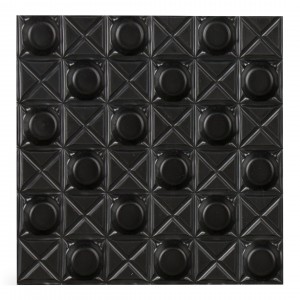Hi, this is my first post, I am in desperate need of help! I bought this 1920's terrace in December last year, didn't have a survey done and noticed fairly quickly that the house is suffering from severe damp issues, especially around the fireplace. The timbers are infested with beetle and need to be replaced, the external wall had cavity wall insulation (the white fluffy stuff) which I have recently had extracted. I am in the process of knocking the vestibule down as I believe it will improve airflow around the room, and allow the moisture to run off through the air bricks, as my house is on a bit of a hill so it's slightly tilted (the most damaged bit of skirting was on the vestibule wall). I have no idea what to do bout the fireplace, as the base is saturated with damp and doesn't really seem to be drying out, even with the subfloor open and ventilated. Piles of sand and rubble were left leaning up against the brickwork around the base of the fireplace. It has a bitumen damp course around the room, which I've just noticed has some fungus growing on it. The bitumen doesn't go all the way around the fireplace, so I'm assuming it's not how it was originally when it was built. I'm knocking the gypsum plaster off the external wall and planning to replace it with lime.
The last picture is the infected area in my kitchen, the rest of it is lime plastered and seems ok, but the area you see has had a gypsum skim but seems like there's something else behind it, at least at the bottom.
Anyways any ideas would be appreciated, and if you want me to provide more pictures I would be more than happy to do so. I really have no experience at all with DIY so I am almost at the point of despair right now. I am just hoping these issues can be fixed. Thank you in advance for your time.
Steve






The last picture is the infected area in my kitchen, the rest of it is lime plastered and seems ok, but the area you see has had a gypsum skim but seems like there's something else behind it, at least at the bottom.
Anyways any ideas would be appreciated, and if you want me to provide more pictures I would be more than happy to do so. I really have no experience at all with DIY so I am almost at the point of despair right now. I am just hoping these issues can be fixed. Thank you in advance for your time.
Steve




![20231124_080245[1].jpg](https://cdn.diynot.com/data/attachments/322/322506-0e3e40cb944088032ed06f4a53d5b6da.jpg)
![20231124_080323[1].jpg](https://cdn.diynot.com/data/attachments/322/322507-0e8a9153cb03bb56bdb483983d9cb50d.jpg)
![20231124_080503[1].jpg](https://cdn.diynot.com/data/attachments/322/322508-1bd18b401e92a1f178a8eeab17bdd266.jpg)
![20231124_080553[1].jpg](https://cdn.diynot.com/data/attachments/322/322509-fe61d99b2b9757ec8f72a0a1657ad8f8.jpg)
![20231124_080628[1].jpg](https://cdn.diynot.com/data/attachments/322/322510-8f92652e7036e28c623e15798d0a3505.jpg)
![20231124_080849[1].jpg](https://cdn.diynot.com/data/attachments/322/322511-c59c8efaed422b37fb9a738eff65908e.jpg)
![20231124_080908[1].jpg](https://cdn.diynot.com/data/attachments/322/322512-9c5d09ff4100fb8eaf497e4deb8c043f.jpg)
![20231124_080245[2].jpg](https://cdn.diynot.com/data/attachments/322/322514-0e3e40cb944088032ed06f4a53d5b6da.jpg)
